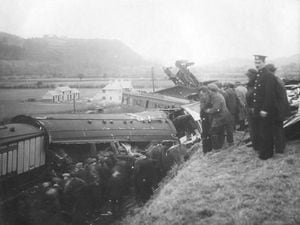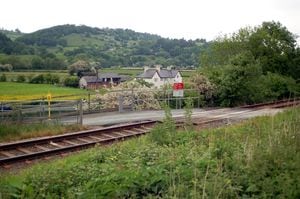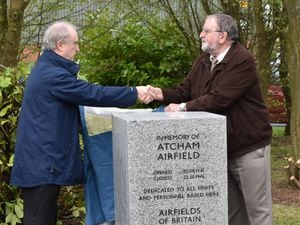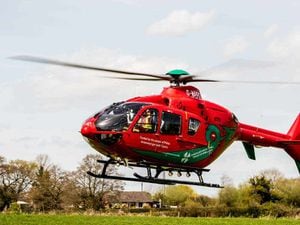Abermule train crash 100 years on: How tragic mix-up cost 17 lives
One railway line, two trains travelling on it in opposite directions. Towards each other.

It is a nightmare which should never have become reality, but 100 years ago this month it did, near Abermule.
On January 26, 1921, the express from Newtown met head-on the local train which had left Abermule station. Seventeen people died.
The collision was at a point known as Red House Crossing, a mile south of Abermule.
The Newtown express came round a blind bend to be confronted by the oncoming local train. In fact, the alert driver and fireman had already seen the smoke of the local and slammed on the brakes. They leapt clear moments before the impact.
The driver and fireman on the local either did not see the oncoming express, or saw it too late to do anything about it. They were among the dead.
The Abermule rail disaster was the subject of a book called The Deadly Tablet, written by David Burkhill-Howarth. In it he identified the policeman on the far right of our photo of the scene as Sergeant Woodfine, who lived locally.

How could it happen? The line was worked by the “electric tablet method”. Every train carried a token authorising it to travel on that stretch of line and it was impossible for more than one tablet to be taken out at a time for the same section.
The subsequent inquest uncovered a story of lax procedures at the Abermule station in which a 15-year-old clerk and a 17-year-old porter were being left unsupervised and regularly, and quite contrary to regulations, handling the tablets.
On this day Francis William Thompson, the boy clerk, collected the tablet from the local train and gave it to the acting stationmaster, Frank Lewis, with the words: “Change this, Frank. I will go and get the tickets.”
Lewis told the inquiry that he thought Thompson had said “Take this tablet” rather than “Change this tablet”.
The upshot was that Lewis, who had not seen the boy collecting the tablet from the train, thought the tablet had already been changed and that he was holding the authority for the train to proceed on the Abermule to Newtown stretch.
So he handed it back to the train crew. It was their death warrant.
The mistake would have been spotted had he or the crew checked the tablet. They didn’t, and the train left the station.
Station staff at Abermule discovered too late that they had blundered.
At two minutes past noon they called Newtown station to ask if the express had left.
“Yes, at 11.59,” said Newtown station foreman James Brock.
“Good God, and the down has gone out!” came the reply from Abermule.
Abermule station staff were held almost entirely to blame for the catastrophic incident, and particularly the stationmaster John Parry – who was on leave at the time of the crash – the acting stationmaster Lewis, and the signalman Thomas William Jones, who were held to have allowed slipshod practices to develop.





